This post may contain affiliate links. Please read our disclosure policy.
How to make sugar from sugarcane, including unrefined cane sugar and jaggery (gur). All you need is sugarcane juice and patience to make these delicious unrefined sugar products!

If you follow me on Instagram, you might have caught some of my ongoing series looking into sugar – what the various sugars are, how they’re made, whether they are possible to make at home, etc. Well, when I started visiting a small local store and noticed they had a sugarcane juicer in-store, it got my brain cogs turning. I realized that I could have the chance to play around with creating more homemade sugar products, including unrefined cane sugar and jaggery (also called gur).
Within this post, I’ll take you through two methods of processing the sugarcane juice. First into molasses-rich granulated unrefined cane sugar and the second into homemade “jaggery.” Not only is this great for anyone who isn’t able to purchase it easily where they’re from but making it at home allows you to omit any unnecessary “additives” and can be a “cleaner” process, too.
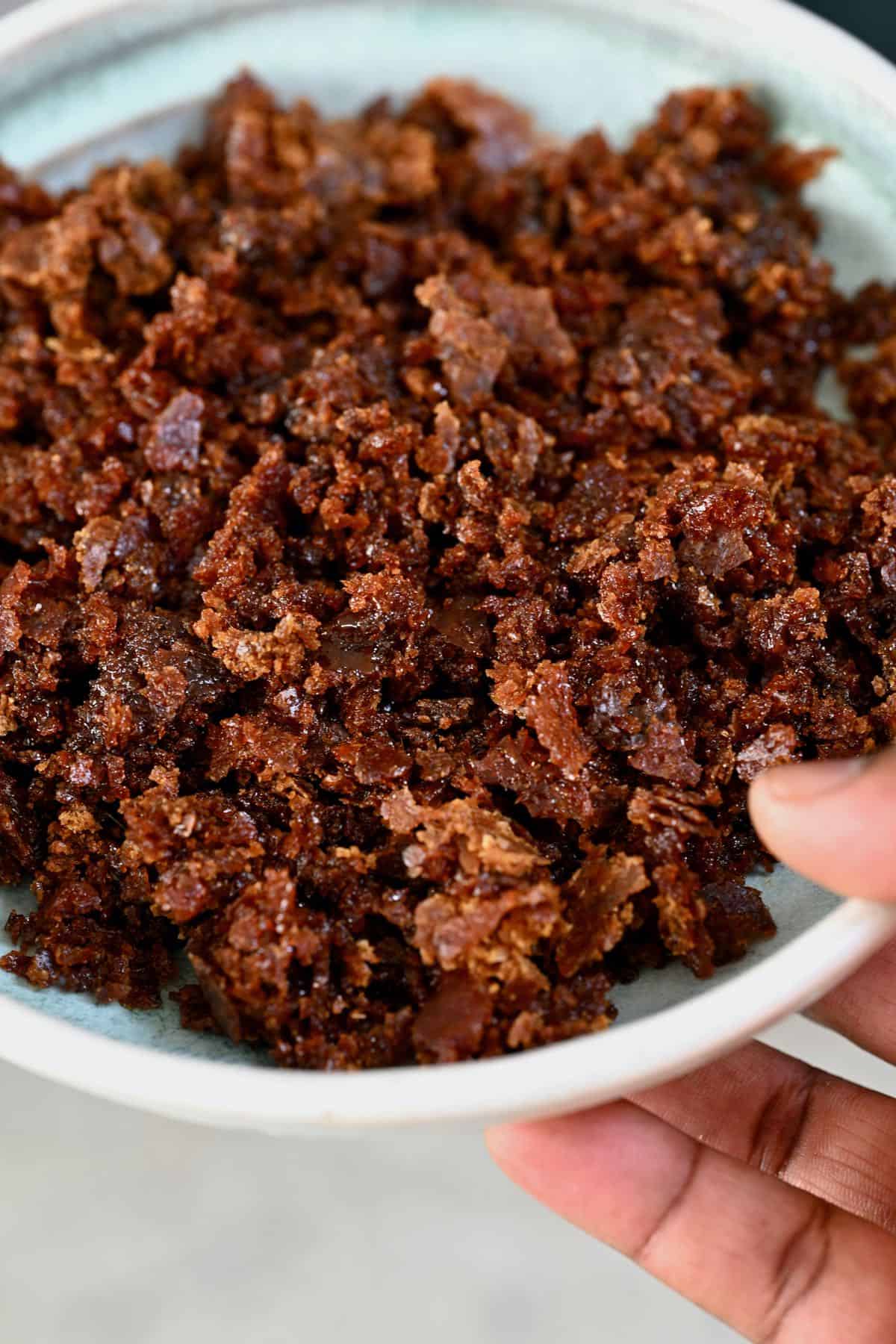
Want to save this recipe?
What is jaggery?
Jaggery – also called “Gur” in Hindi, is a type of unrefined sugar, highly consumed in India and Southeast Asia, that comes from concentrated sugarcane juice (though there are versions made from coconut sap and date palm, too). Thanks to the lack of separation of the molasses and crystals, the color ranges from a light golden color to dark brown.
When it comes to making jaggery, the process is simple. First, the sugarcanes are crushed to extract the juice. This juice is then filtered and boiled to remove any impurities. In some commercial versions, certain bleaching or purifying agents are added to “clean” the juice at this point.
The boiled juice (which is now thick and syrupy in consistency) is then transferred to large, wide containers where they’re left to cool to form a jaggery “block,” which is cut into squares/rectangles.
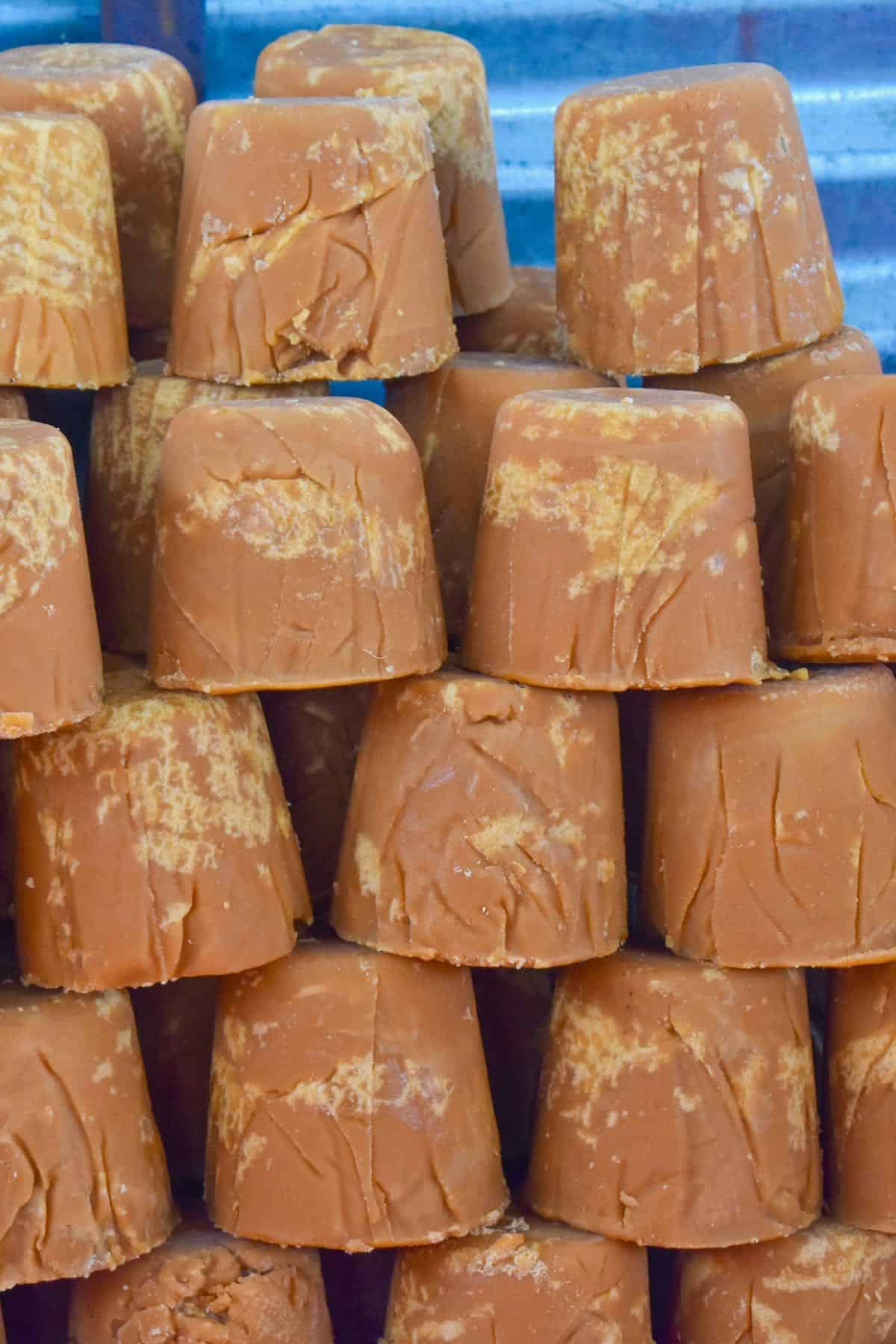
In comparison, the unrefined cane sugar is darker in color and granulated (rather than in block form). Depending on the color of the unrefined sugar, some even mistake it for brown sugar.
Are brown sugar and jaggery/unrefined cane sugar the same?
No. Although cane sugar is in granules and has a brown color thanks to the molasses content, it is far less processed than brown sugar. When making brown sugar, a centrifugal process is used to make regular (white) sugar (spun at high temperatures to remove the molasses from the sugar) and then a specific amount of molasses is added back into it to create different types of brown sugar.
In both the unrefined cane sugar and jaggery, nothing (apart from impurities) is removed from the sugar, thus making it contain higher nutritional value and different sweetness levels.
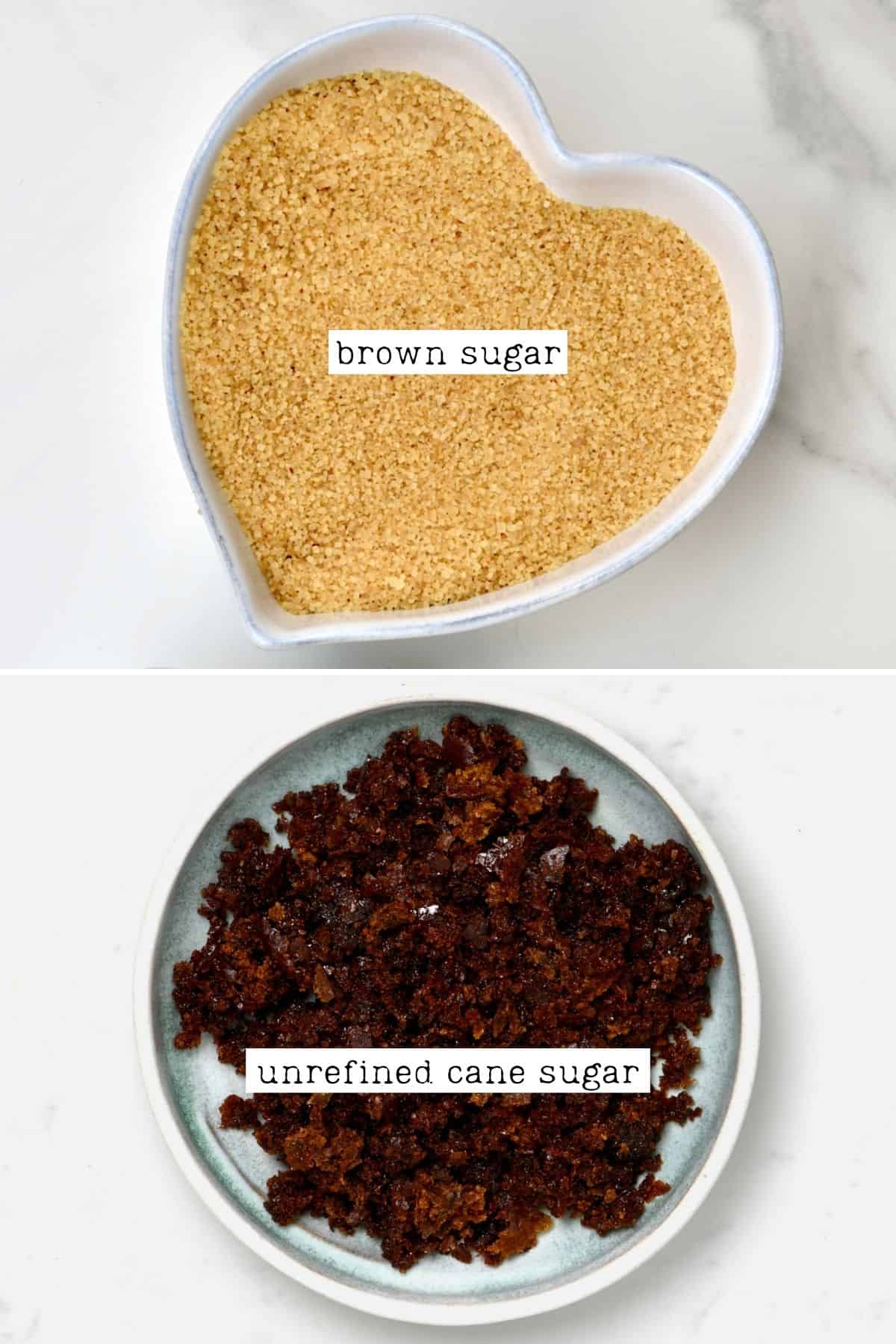
What are jaggery benefits?
While jaggery (and the unrefined sugar) is still sugar, it’s been used for centuries as a health aid. Thanks to the lack of processing (like raw honey), jaggery is rich in vitamins and minerals, having immune system boosting properties and antioxidants. In fact, it’s popular to eat a piece of jaggery after meals, not only as a “sweet” but as it’s said to be good for your digestive system and help to remove toxins from the body.
According to Ayurveda, jaggery also contains anti-allergic properties, which can help boost lung health by eliminating toxins and mucus. Thus it’s used to treat various respiratory issues, including coughs, colds, asthma, etc.
When directly comparing sugar vs. jaggery, jaggery is the more nutritional of the two, containing no chemicals. It is lower GI, too (being absorbed slower by our bodies, thus not spiking out blood sugar levels as rapidly). However, it is still sugar, so the general daily guidelines for sugar consumption remain the same. Just like any sugar, too much can lead to weight gain and spikes in blood sugar levels. More so, it contains high levels of sucrose, which should be avoided by those with inflammatory conditions (like rheumatoid arthritis).
You can read more about jaggery, its benefits, and its uses here on Healthline.
The ingredient
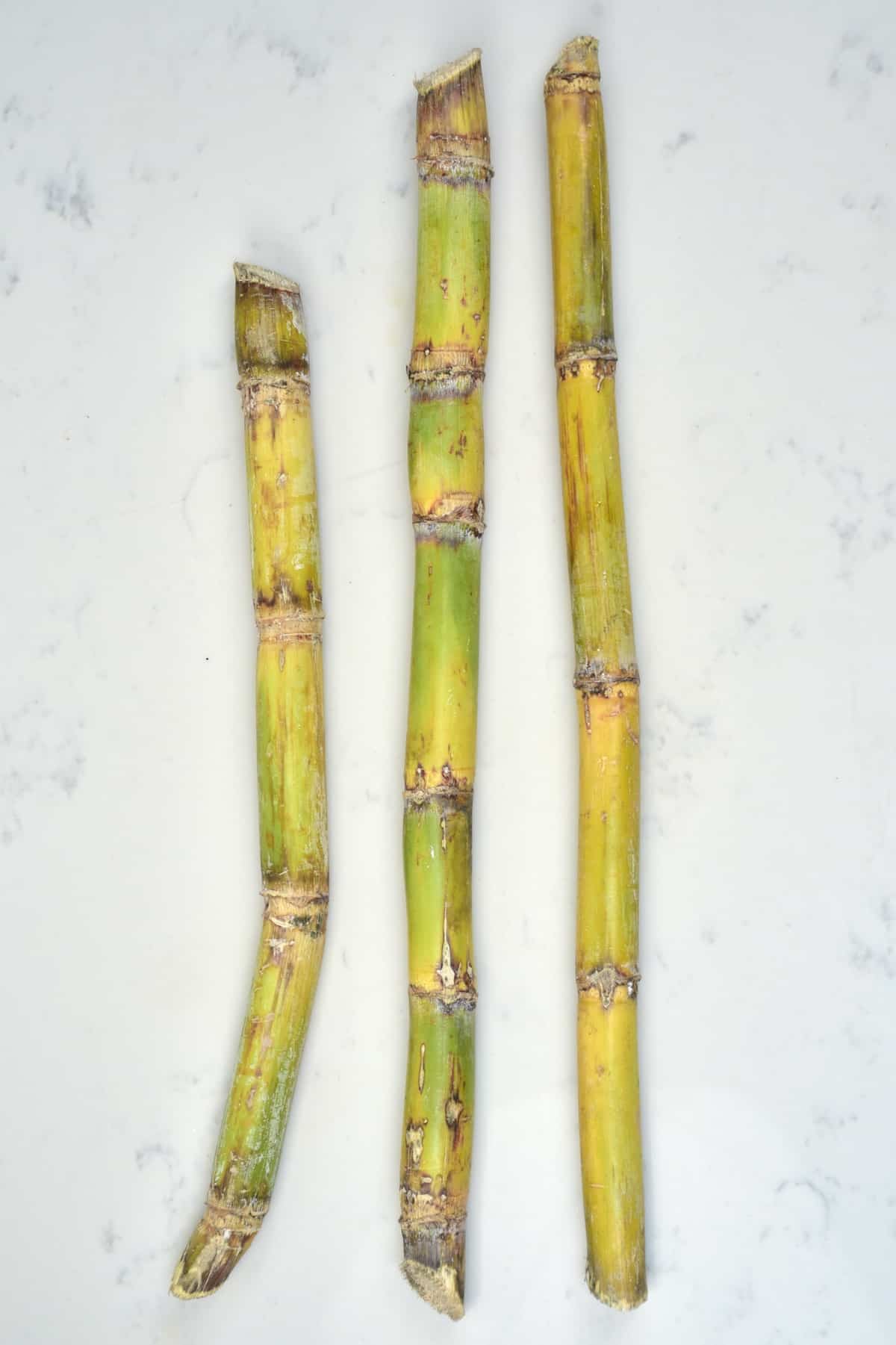
All you need to make both the unrefined cane sugar and jaggery is just one ingredient: sugar cane!
- Sugarcane: because of the toughness of sugarcane, it takes special machines to break it down for juicing. For that reason, I purchased my fresh sugarcane juice from a local store that juiced it right then and there for me.
How to make sugar from sugarcane?
Method 1: Unrefined cane sugar
Step 1: Juice the sugarcanes
Sugarcanes are tough and require a particular juicer to break down the tough stalks properly. I purchase mine fresh from a local store and I juice the sugarcanes there (nothing extra added to the juice!).
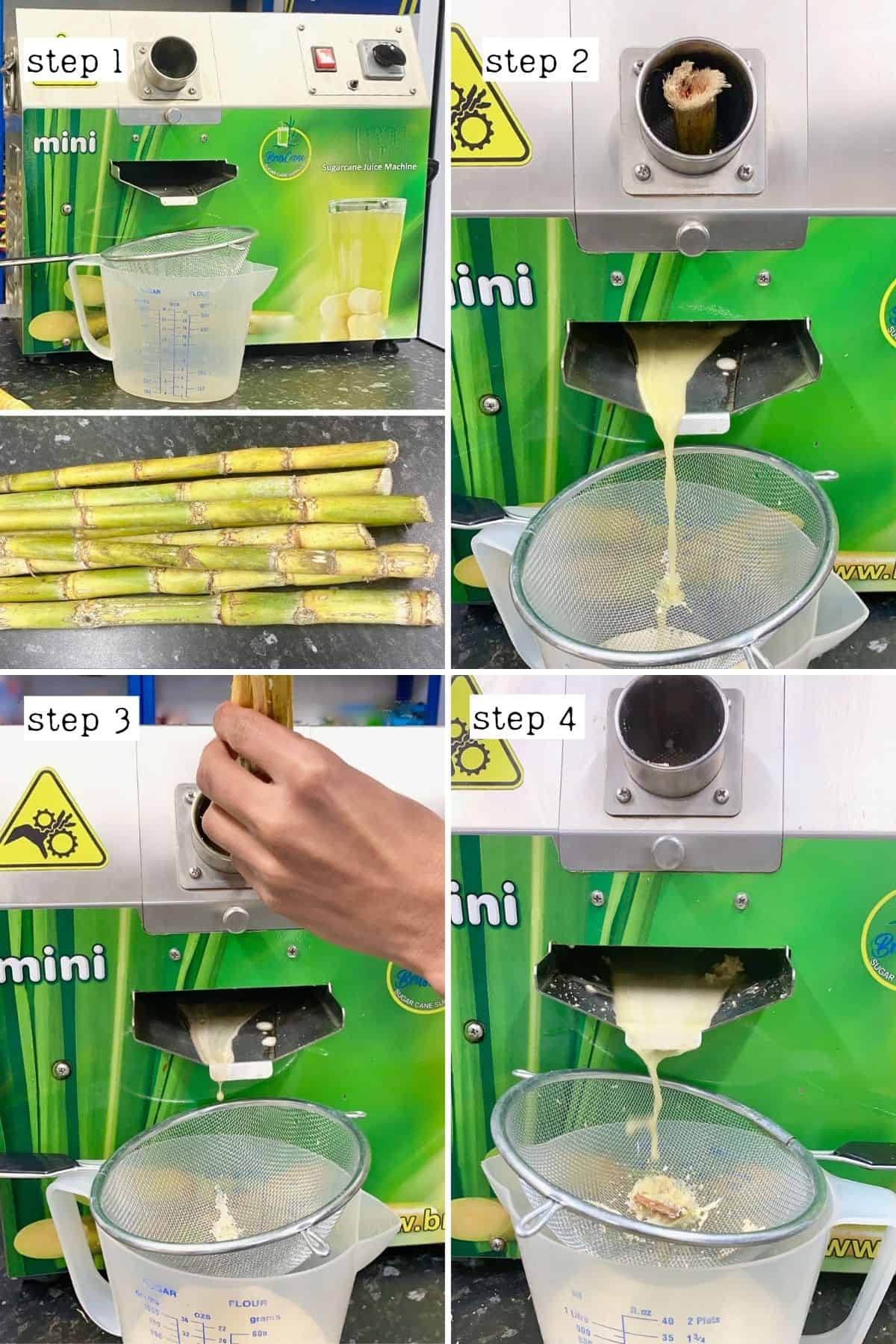
It is possible to juice them at home too but you first need to cut the sugarcane into thin small strips so it’s easier on your juicer.
Optionally, before moving to step two, you can boil the juice to remove any impurities. However, it is safe to consume it without boiling it. To boil – add the juice to a large heavy-bottom pan and bring to a boil over medium heat. Foam will appear on the top of the mixture, which is from all the impurities. Skim off the foam and continue to boil until there is none left (20-30 minutes). Then remove the juice from the heat and carry on to step two. Boiling the juice will also cause the color of the final sugar to be darker.
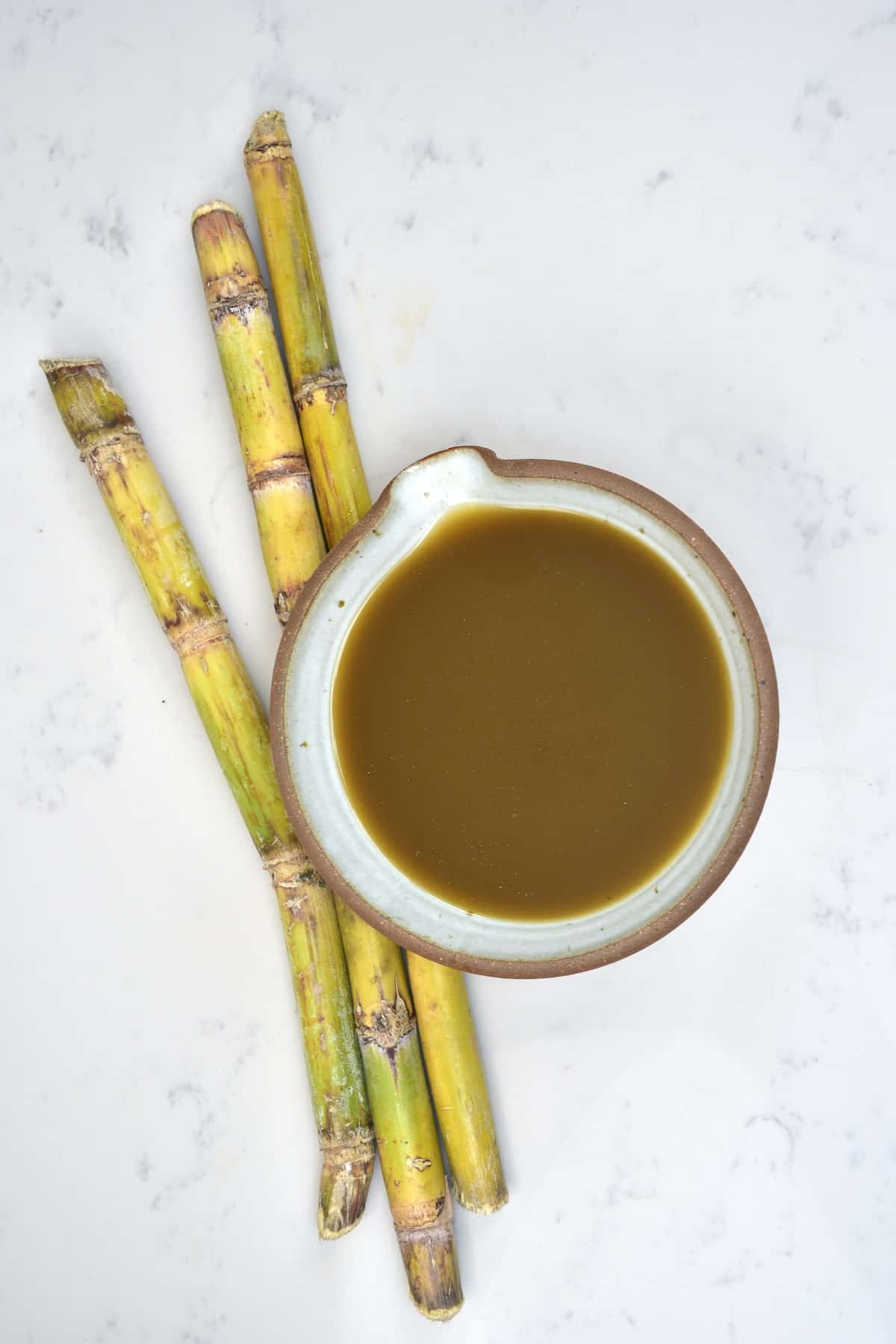
Step 2: Dehydrate the juice
Pour the sugarcane juice into a large oven-safe/dehydrator-safe dish. Ideally, you want as thin of a layer of the liquid as possible, so it dehydrates quicker. For that reason, using several containers is best.
Place the tray/s in your dehydrator (or oven if it goes low enough) at 140-150ºF/60-65ºC (the lower, the better). This process will take between 24-48 hours, depending on how thick your layer of juice is and the amount that you’re dehydrating.
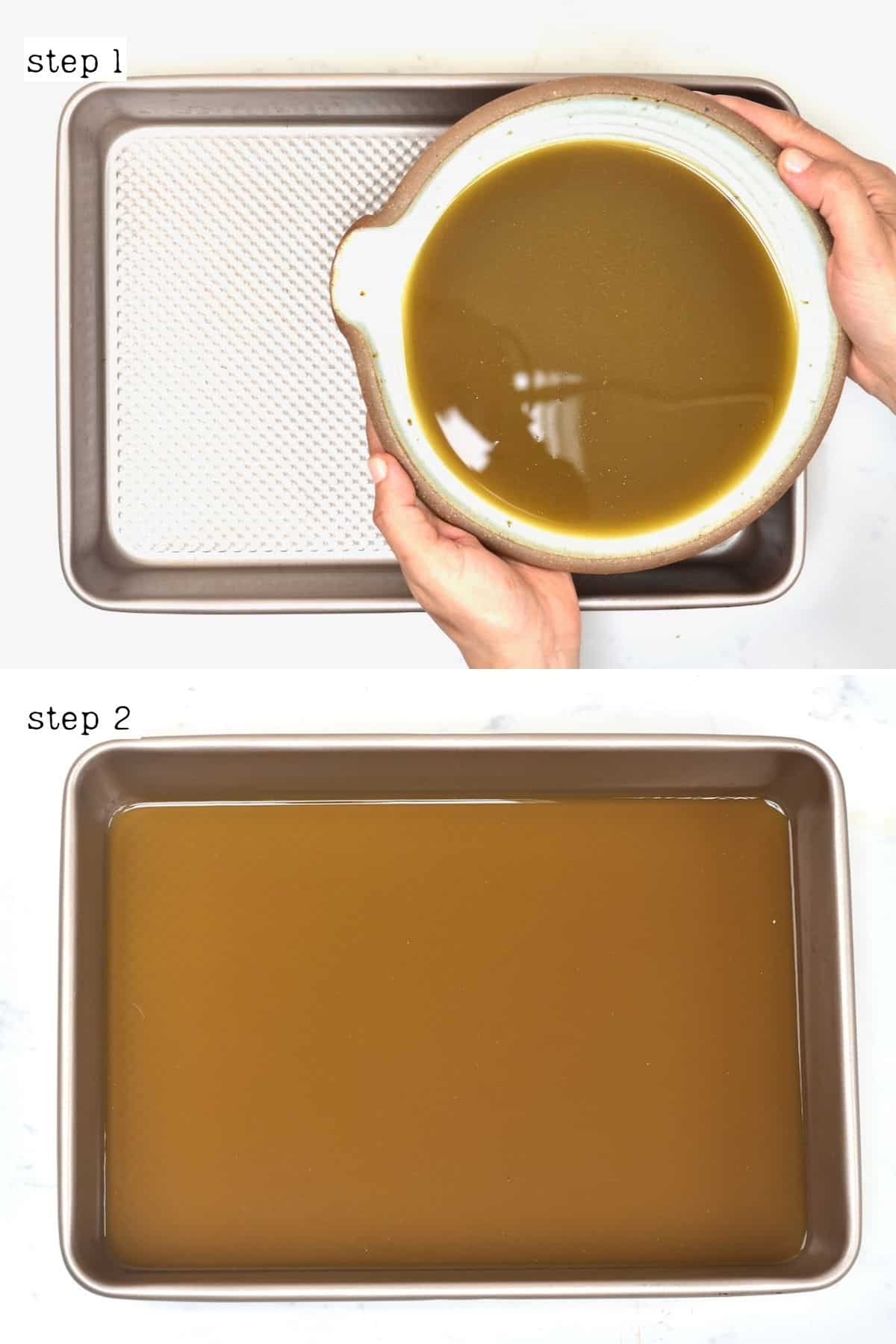
During the evaporation period, the juice will first begin to look like a thick syrup and then will thicken and start to resemble a wet molasses-y sugar. The color will be dark due to the molasses.
Mine was a little too dark around the edges this time. To avoid that, I’d recommend starting to break up the crystals and mix them when they reach stage 3 (pictured below). That way, they’ll dry out more evenly. You can do this a couple of times to make sure the edges don’t brown too quickly.
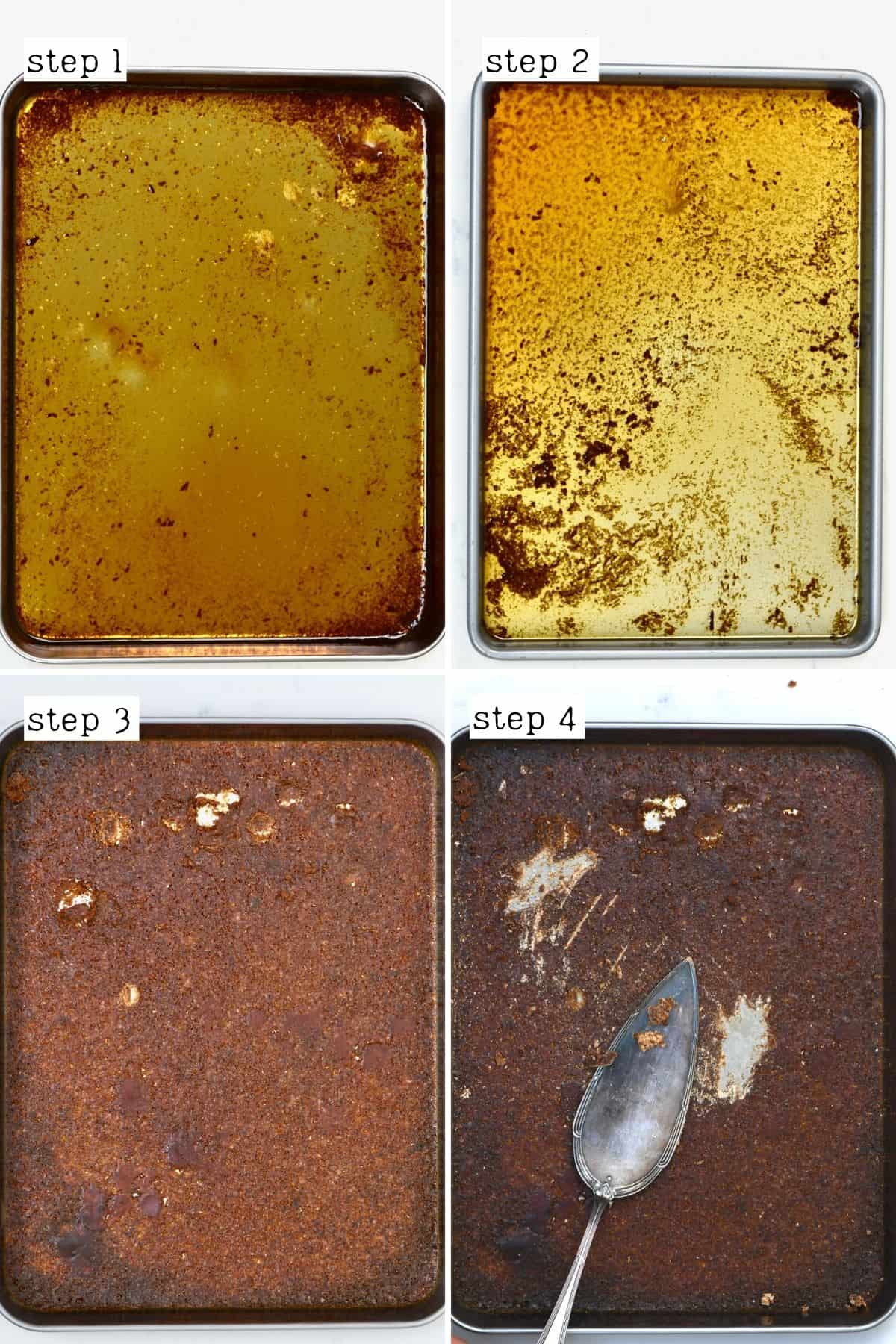
Once it’s very dark but no longer too “wet,” you can break it down into smaller crystals. Do this with a bench scraper, sharp knife, or in a food processor. This is your unrefined cane sugar!
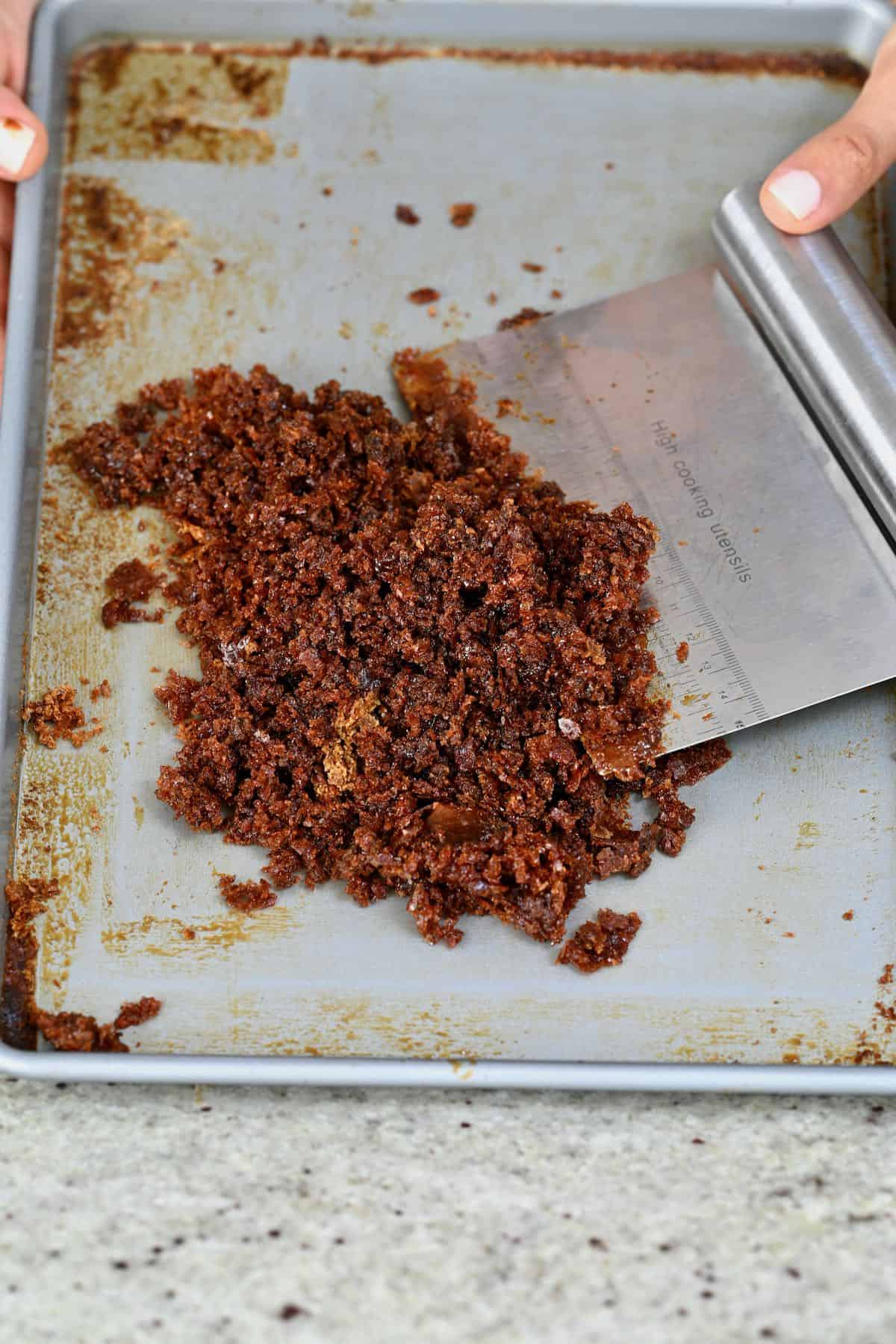
Method 2: How to make jaggery
First, juice the sugarcane as in the other method. Then pour the juice into a large, heavy-bottomed pan and bring to a boil over medium-high heat. Scoop off any foam that appears at the top as it boils. These are the impurities coming to the surface. Then reduce the heat to medium and continue to boil, removing the foam until there is none left. Continue to stir often until the mixture becomes a thick syrupy consistency that drops from your spoon in rivulets.
This entire process will take between 40-60 minutes usually. It will first be very liquidy and become quite “clear” in color, then become super bubbly and golden before thickening down into a golden syrupy “slurry’ consistency. At this point, you have liquid jaggery, called “kakvi.”
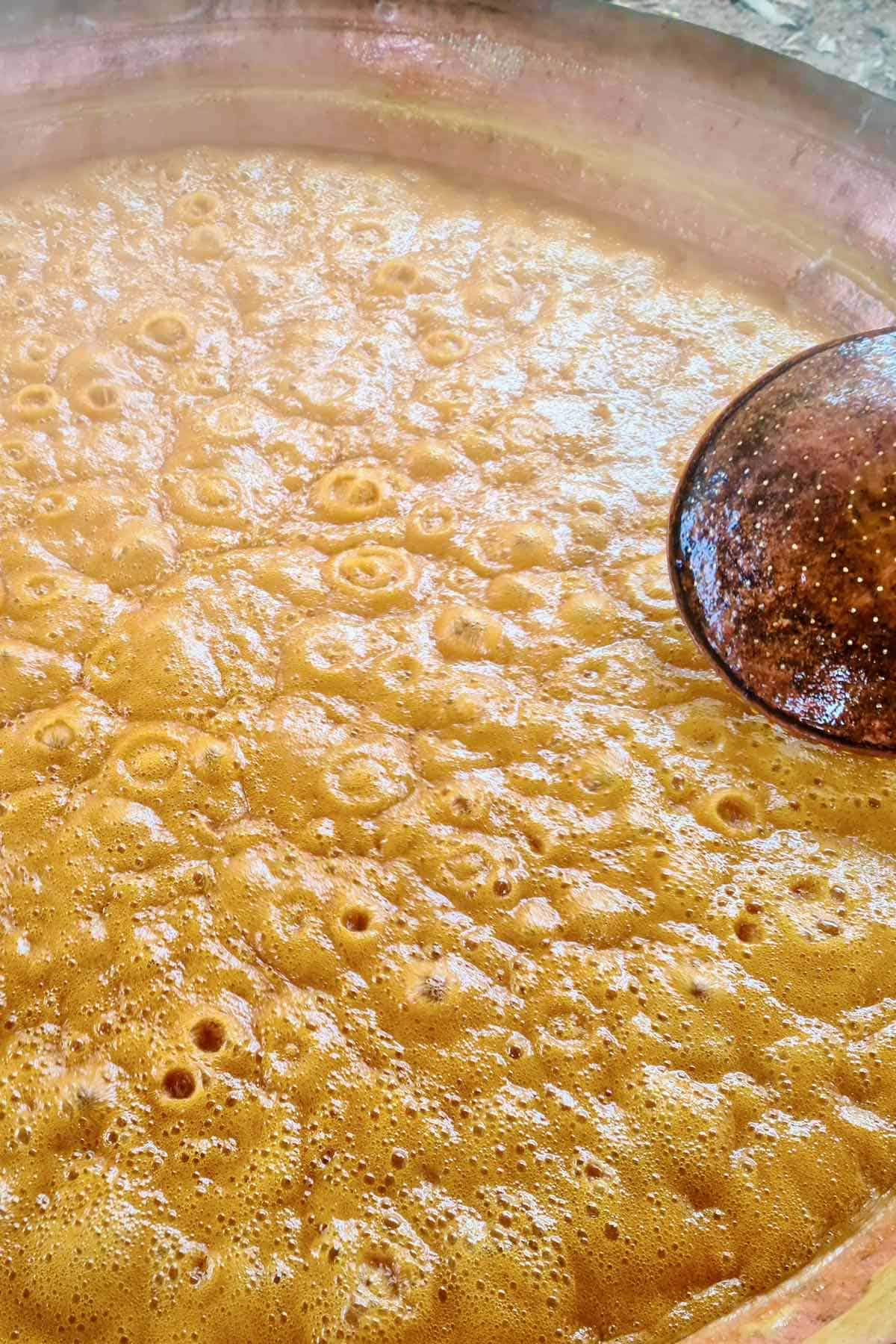
Then, remove the syrup from the heat and stir it constantly for several minutes (or longer depending on how much you’re making) to cool down the mixture. Keep it in motion to stop it from sticking. When it’s a really thick syrup consistency, transfer it to a large oiled deep baking tray (or multiple). I like to use enough trays that make it, so the jaggery is no bigger than 1 inch in thickness.
To test that the mixture is ready to transfer, you can drop some of the syrup into a glass of cold water. It should solidify and “ball up” when pressed.
You can then either allow this mixture to dry at room temperature until it’s a solid mass (which can take 24hrs+ depending on the temperature and climate) OR use a dehydrator/oven to speed up the dehydration process. The time it takes to cool will depend on how thick it is and the temperature/humidity/climate.
Once it is in a solid state, use a knife to cut the block into smaller pieces. Then transfer these to a large airtight container – your jaggery is ready! Alternatively, you can break pieces down into jaggery powder and store them that way.
How to store
You can store the unrefined cane sugar or jaggery in an airtight container at room temperature for between 3-4 months. It may last even further, up to 6 months – but I’ve not tried that far (yet).
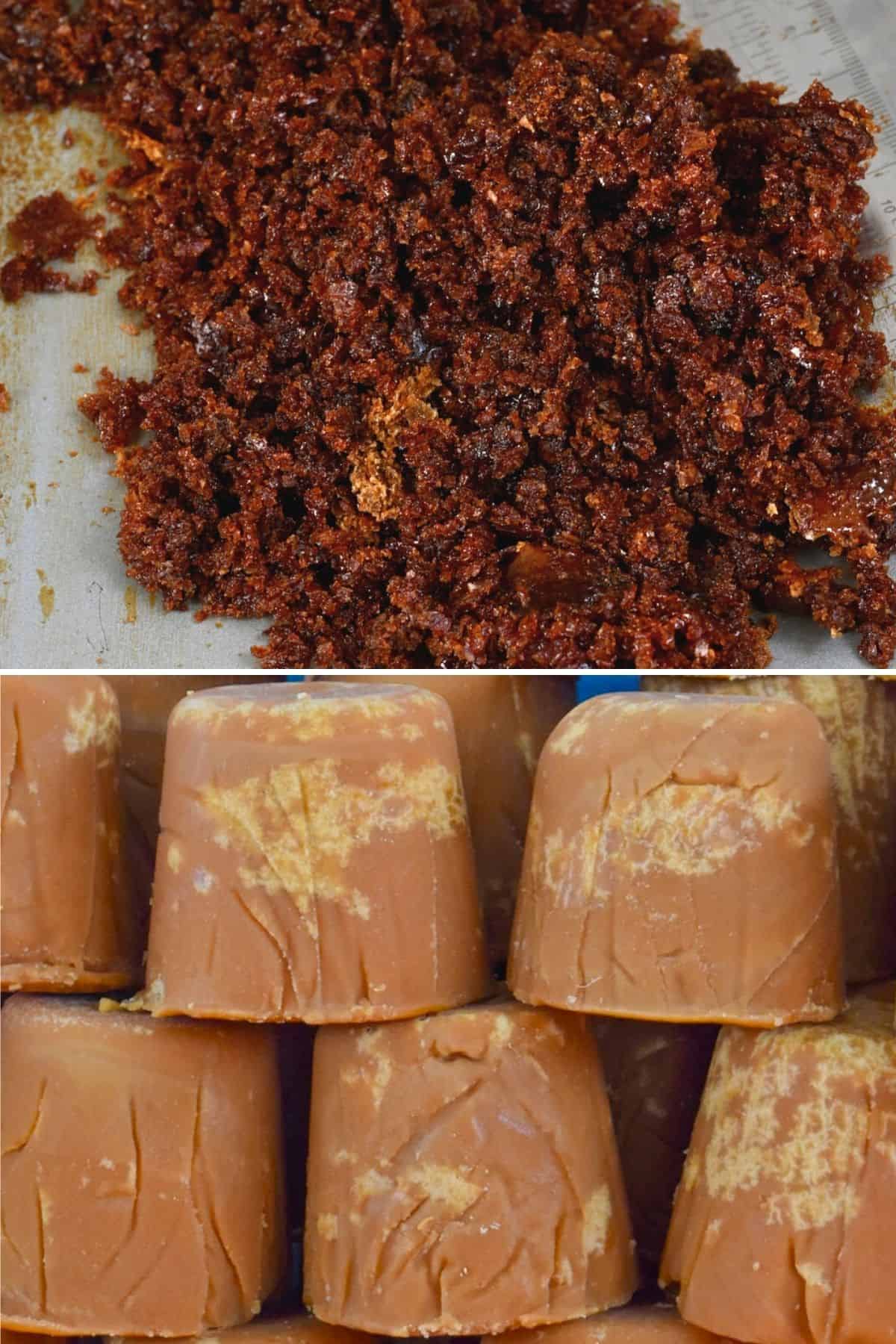
How to use
How to make jaggery powder? One method has you heating your block of jaggery in a microwave for 20-30 seconds on both sides. It should then be soft enough to easily break down into smaller pieces. However, you can also do it without a microwave by using a vegetable peeler or box grater.
Both the granulated unrefined cane sugar and the jaggery work as sugar alternatives. They can be used in many ways you’d use regular sugar.
- Use either as a sweetener in curries and other spicy foods to balance the flavors.
- Several types of “sweets” (including chakkara Pongal, kobbari undalu, payasam, or jaggery cake) are made with jaggery – often with added ingredients like nuts, coconut shreds, puffed rice, peanuts, milk/cream/condensed milk, etc. are added to the jaggery.
- Use either of them to sweeten drinks like ginger tea, tea, coffee, etc.
- You can use both products (granulated and jaggery) to create a simple syrup, perfect for using as a liquid sweetener in recipes.
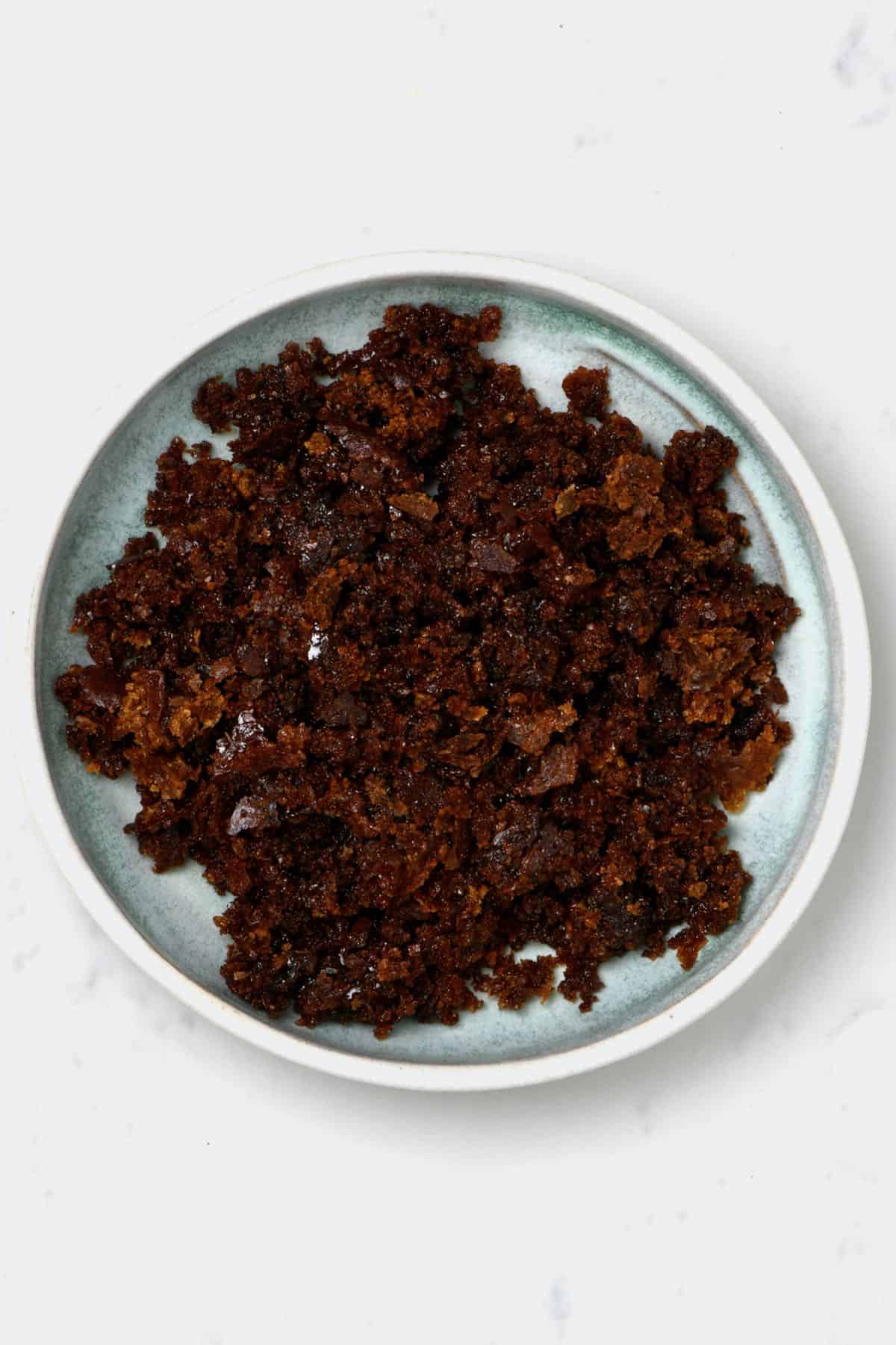
Notes and top tips
- Make sure the juice is fresh: if you’re able to source fresh sugarcane juice, that’s what you need for these methods. You don’t want one that has any preservatives/add-ins.
- Make sure to stir while the jaggery cools: if you don’t, it will stick to the container – you want it to remain liquid until you transfer it.
- Remove the jaggery from the heat at the right time: this can take a little practice, but you’ll soon come to tell when your mixture is ready. If you stop the heat too early or late, then the color will change, and it won’t melt the way it should. Using the water test for it “balling up” helps (mentioned in the recipe).
More homemade DIYs
- Homemade condensed milk
- How to make date syrup
- Making chocolate – from bean to bar
- How to make simple syrup
- How to make powdered sugar
- Homemade vegetable bouillon cubes/powder
- How to make herb salt
- How to Make Baking Powder
- Easy Homemade Pumpkin Pie Spice (Substitutions and Uses)
- How to Make Bulgur Wheat at Home
If you try this method for unrefined cane sugar/jaggery, I’d love to hear your thoughts/questions below. Also, I’d appreciate a recipe card rating below, and feel free to tag me in your recipe recreations on Instagram @Alphafoodie!
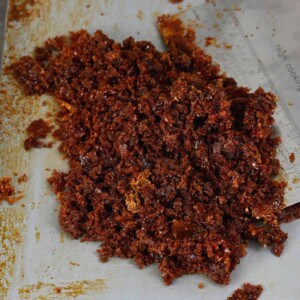
How to Make Unrefined Cane Sugar & Jaggery (Gur)
Ingredients
- 3.17 qt sugarcane juice (12.5 cups)
This will yield about 2.5 cup of cane sugar
Instructions
Method 1: Unrefined Cane Sugar
Step 1: Juice the sugarcanes
- Sugarcanes are tough and require a particular juicer to break down the tough stalks properly. I purchase mine fresh from a local store and I juice the sugarcanes there (nothing extra added to the juice!).It is possible to juice them at home too but you first need to cut the sugarcane into thin small strips so it's easier on your juicer.Optionally, before moving to step two, you can boil the juice to remove any impurities. However, it is safe to consume it without boiling it. To boil – add the juice to a large heavy-bottom pan and bring to a boil over medium heat. Foam will appear on the top of the mixture, which is from all the impurities. Skim off the foam and continue to boil until there is none left (20-30 minutes). Then remove the juice from the heat and carry on to step two. Boiling the juice will also cause the color of the final sugar to be darker.
Step 2: Dehydrate the juice
- Pour the sugarcane juice into a large oven-safe/dehydrator-safe dish. Ideally, you want as thin of a layer of the liquid as possible, so it dehydrates quicker. For that reason, using several containers is best.
- Place the tray/s in your dehydrator (or oven if it goes low enough) at 140-150ºF/60-65ºC (the lower, the better). This process will take between 24-48 hours, depending on how thick your layer of juice is and the amount that you're dehydrating.
- During the evaporation period, the juice will first begin to look like a thick syrup and then will thicken and start to resemble a wet molasses-y sugar. The color will be dark due to the molasses.I recommend starting to break up the crystals and mix them before the water is completely evaporated. That way, the sugar will dry out more evenly. You can do this a couple of times to make sure the edges don't brown too quickly.
- Once it's very dark but no longer too "wet," you can break it down into smaller crystals with a bench scraper, sharp knife, or in a food processor. This is your unrefined cane sugar!
Method 2: How to Make Jaggery
- Juice the sugarcane as in the method above. Then pour the juice into a large, heavy-bottomed pan and bring to a boil over medium-high heat. Scoop off any foam that appears at the top as it boils as these are the impurities coming to the surface. Then reduce the heat to medium and continue to boil, removing the foam until there is none left, then stirring often until the mixture becomes a thick syrupy consistency that drops from your spoon in rivulets.This entire process will take between 40-60 minutes usually. It will first be very liquidy and become quite "clear" in color, then become super bubbly and golden before thickening down into a golden syrupy "slurry" consistency. At this point, you have liquid jaggery, called "kakvi."
- Remove the syrup from the heat and stir it constantly for several minutes (or longer depending on how much you're making) to cool down the mixture. When it's a really thick syrup consistency, transfer it to a large oiled deep baking tray (or multiple) – I like to use enough trays that make it, so the jaggery is no bigger than 1 inch in thickness.To test that the mixture is ready to transfer, you can drop some of the syrup into a glass of cold water – it should solidify and "ball up" when touched.
- Either allow this mixture to dry at room temperature until it's a solid mass (which can take 24hrs+ depending on the temperature and climate) OR use a dehydrator/oven to speed up the dehydration process. The time it takes to cool will depend on how thick it is and the temperature/humidity/climate.
- Once it is in a solid state, use a knife to cut the block into smaller pieces and then transfer these to a large airtight container- your jaggery is ready! Alternatively, you can break pieces down into jaggery powder and store them that way.
How to Store?
- You can store either the unrefined cane sugar or jaggery in an airtight container at room temperature for between 3-4 months. It may last even further, up to 6 months – but I've not tried that far (yet).
Notes
- Make sure the juice is fresh: if you’re able to source fresh sugarcane juice, that’s what you need for these methods. You don’t want one that has any preservatives/add-ins.
- Make sure to stir while the jaggery cools: if you don’t, it will stick to the container – you want it to remain liquid until you transfer it.
- Remove the jaggery from the heat at the right time: this can take a little practice, but you’ll soon come to tell when your mixture is ready. If you stop the heat too early or late, then the color will change, and it won’t melt the way it should. Using the water test to see if it’s “balling up” helps (mentioned in the recipe).
Nutrition
Nutrition information is automatically calculated, so should only be used as an approximation.



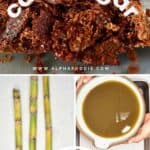
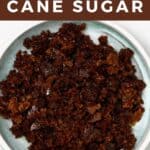
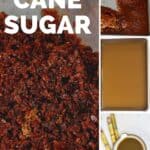
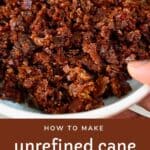
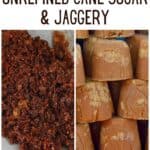









It’s educational and I think I can try someday.
Hey Paul! That sounds awesome! I think you’ll really enjoy making it. Let me know how it goes!
Crystals or granules – technical terms ?
Unhealthy processed sugar in centrifuge produce crystals
Healthy unprocessed sugar produce granules not crystal.
Thank you so much for letting me know!
I am excited to try this sometime this year! The steps were clearly explained! Thank you
I hope you give it a try, Keith. It’s a fun experiment. 🙂
Excellent article on jaggery making
Thank you for your comment, Hemant.
Thanks for an interesting post. If you have never become ill from drinking raw sugarcane juice, you are fortunate. You are also running a serious risk of food poisoning. As a volunteer doctor in India some years back, the most horrible case of food poisoning came from drinking raw cane juice. One can blame the unhygienic equipment used to express the juice. But I would not trust the health food store to maintain sterility with its machine. Safer to pasteurize it at home.
Thank you for your advice, will keep it in mind!